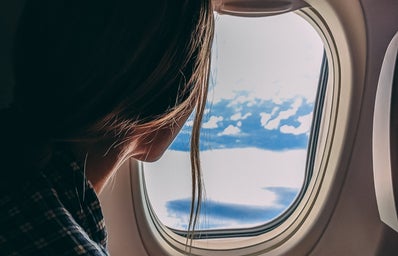Hey, you. What comes to mind when you see an air stewardess? Specifically, one employed by our national carrier, Singapore Airlines? A “Singapore Girl”?
“The essence of the Singapore Girl is something no other airline can duplicate. She’s reached mythical status.” – CampaignAsia
Seeing and hearing of people, even young girls aspiring to be a “Singapore Girl”, with friends and relatives treating you differently when you are one because they can’t dissociate the brand from you as a person, makes me wonder, Is the “Singapore girl” image good or bad for my own sense of female identity here in singapore? And if it’s the latter, why is this so? Does female objectification have anything to do with this?
“Singapore Girl”, a term used to describe a Singapore Airlines flight attendant in their sarong kebaya, each closely tailored to hug one’s curves in all the right places, the gold standard Singaporean females should live up to, the epitome of submissiveness and desirability, more than ordinarily attractive. Have you ever questioned why we think of them this way? Is there something beneath the surface to be uncovered? Diving deeper, you’ll realise a few clues.
First, appearances. Flawlessly groomed by Singapore Airlines’ standards, it can be quite hard to distinguish among the stewardesses besides their hairstyle; shining black hair in either a bob or chignon. Their bobs are required to be chin-length without any fringes, whereas buns have to be 6.5cm to 7cm with little to no volume at the crown. These standard hairstyles change with seniority, evolving to bob with bangs, french twist with volume etc. Lipsticks must match the airline’s customised nail colour, within a certain length. There is hardly any variation between their slender figures. In contrast, our true blue Singapore girls—the females we come across in our everyday life—do not look this way. Rather than being the norm, the Singapore Girl is perhaps more of an aspiration of what female identity in Singapore should be.
A second striking feature is their persona. Many stewardesses are required to display a distinct persona: a submissive lady who provides the best Asian hospitality. They are also discouraged from disagreeing with customers, in the name of good service and a kind personality. Over time, the public expects this to be the basic standard, and given the multiple international awards won through this marketing gimmick, we understand why there are no hesitations to continue with the status quo.
But what bothers me about the “Singapore Girl” persona is that it should be a reflection of the true Singapore girls — modern and diverse. Instead, it is misrepresentative and being wielded as a marketing weapon, and most people don’t seem to mind. Subconsciously or not, whenever we board Singapore airlines, we think that the service reminds us of “a taste of home”, but reality could not be more different.
An existing crew member shared, “For what seemed like only yesterday – when I was moulded into that undeniable persona, it has indeed been a long time ago. Nonetheless, it’ll always brings back salient memories and feelings, like catching myself repeating: ‘This is just a portrayal – an image, it is not my identity,’ whenever I entered that iconic training centre.” When she goes on dating apps, she does not list her profession in her profile and hesitates to tell it, for fear of being seen in a stereotypical way. These “Singapore Girls” are full-fledged persons, not caricatures. For other professions than aircrew, people do not seem to hold such strong prejudices. It is ironic that a job that exposes you to the world quite literally, may just end up feeling like a mental prison of some sort.
There are probably readily agreeable reasons for why the “Singapore Girl” was created, and has survived the test of time as a successful concept. Perhaps, it is simply a reflection of our Asian hospitality and the best of what we have to offer. Still, one has to wonder if it is necessary and ideal to continue with this portrayal, when the majority of the female community today do not relate to it at all. Just imagine the existence of a “Korea Girl”, “Thailand Girl”, or even “America Girl”: Do they not sound a little absurd?
As with all facets of life, we dissect nature according to the lines laid out for us. If what we see on the daily contributes to our sense of who we are, what are the implications of the iconic “Singapore Girl” on the Singaporean female identity? Does she perpetuate sexism and female objectification? With nothing but love for our national carrier, one still can’t help but wonder.


